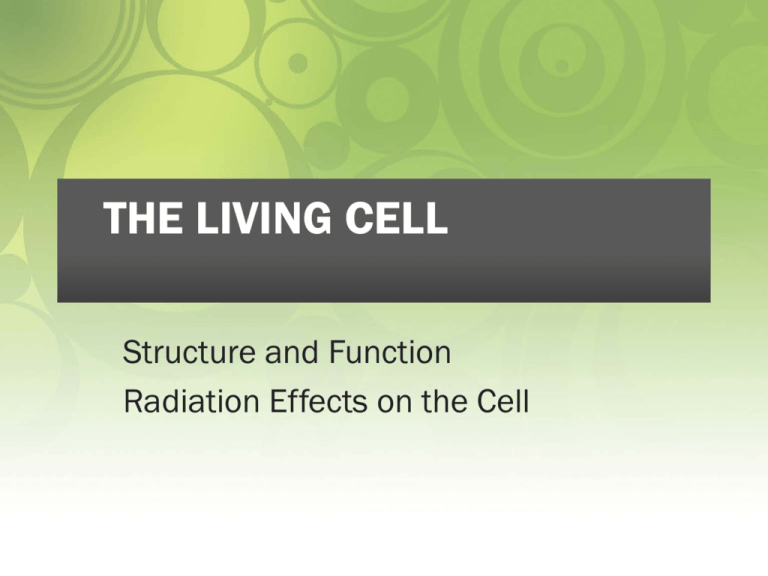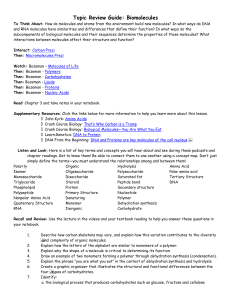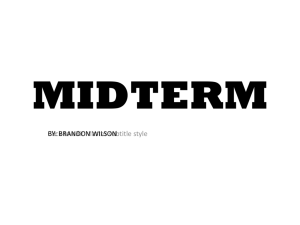the living cell
advertisement

THE LIVING CELL Structure and Function Radiation Effects on the Cell Cell Structures Structure and Function of Living Cells o Living cells and tissue are made of molecules composed of atoms united by chemical bonds. o Composition of these atoms and how they bond determines the physical structure (shape) of molecules. o It is the shape of these large molecules (proteins, nucleic acids, lipids, and carbohydrates) which determines how the molecules function. o Ionizing energy is powerful enough to alter the structure of atoms or molecules, the bonds involved, and greatly affect the function of the molecules in the cell and living tissue. o Altering the shape of molecules in a somatic cell can change the behavior of that cell. oAltering the shape of molecules (especially DNA) in germ cells (egg or sperm) can greatly effect the offspring of the organism. Cell Membrane • Outer membrane of cell that controls movement in and out of the cell • Double layer Nucleus • Directs cell activities • Separated from cytoplasm by nuclear membrane • Contains genetic material - DNA Chromosomes • In nucleus • Made of DNA • Contain instructions for traits & characteristics http://library.thinkquest.org/12413/structures.html DNA Structure Molecules of Living Cells: Proteins: Large Molecule 1. Structural Component of the cell 2. Function as Enzymes to control Metabolic reactions 3. Important component of the cell membrane 4. How the atoms are connected to each causes folding of proteins into 3-D molecule 5. This folding of proteins enhances and supports their function within the cell. Nucleic Acids: Double Helix 1. The backbone of DNA is composed of sugars and phosphates. 2. The rungs of the ladder are nitrogen bases with hydrogen bonding which strengthens the structure. 3. The bases adenine bond with thymine while guanine bonds with cytosine. 4. The arrangement of the nitrogen bases codes for the production of proteins by arranging the amino acids. Ribosomes • Each cell contains thousands • Make proteins • Found on ribosomes and floating throughout the cell Mitochondria • Produces energy through chemical reactions – breaking down fats and carbohydrates • Controls level of water and other materials in cell • Recycles and decomposes proteins, fats, and carbohydrates Golgi Bodies • Protein 'packaging plant' • Move materials within the cell • Move materials out of the cell http://library.thinkquest.org/12413/structures.html Effect Of Radiation on Structure of DNA Direct Or Indirect Action • Direct Action - when ionized energy strikes a molecule, DNA directly • Indirect Action - strikes another molecule such as water -- a “free radical” is produced • Free Radicals react strongly to restore their stable configuration which could create other free radicals within the cell. Living Cells Options after Irradiation











